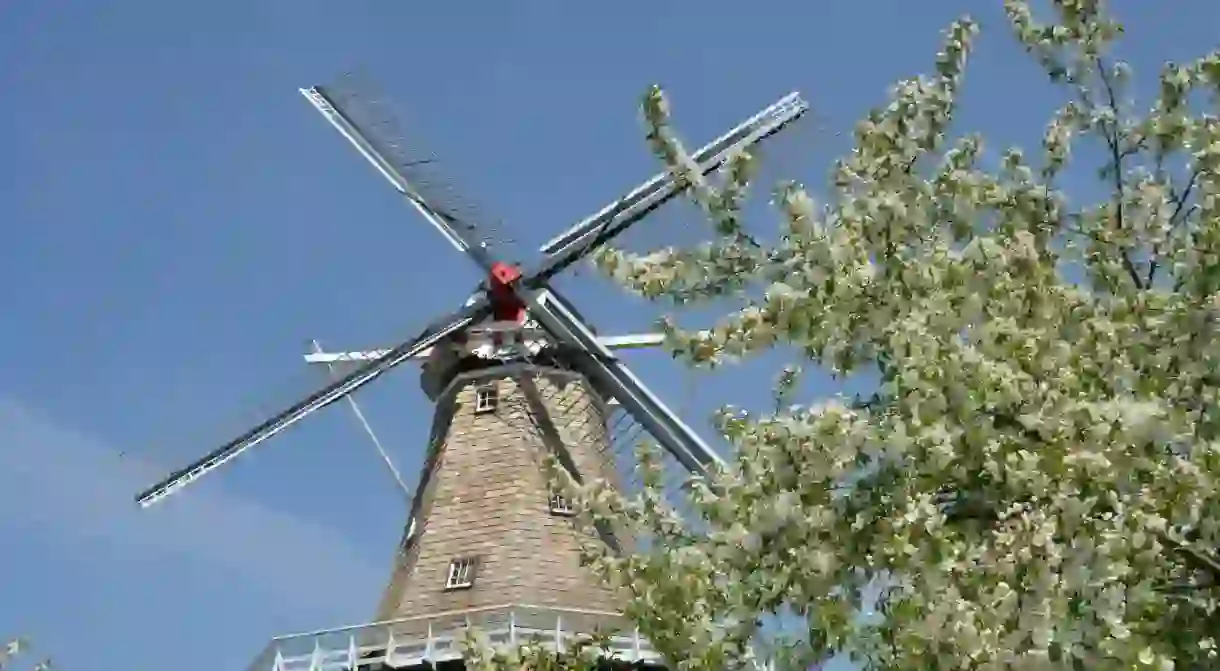This Michigan City Is Famous for Its Dutch Roots

If you’re looking for an authentic European experience without the long-haul flight, why not take a trip to Michigan instead? With a windmill, tulip farms, festivals, and Dutch specialties in shops and restaurants, who needs to go all the way to Holland when you can go to Holland, Michigan?
Holland was settled in 1847 by Dutch Americans who had fled their homeland’s poor economic situation in search of good farming land and religious freedom. Under the leadership of Dr. Albertus van Raalte, an initial group of 60 people made the journey over from Rotterdam, settling in West Michigan near the Lake Michigan shore. They worked hard to make the new town a success, clearing dense forests and digging a channel to the lake, leading to many more of their countrymen joining them.

They established a school, which still exists today as Holland College, and railroads, and despite a disastrous fire in 1871, the city continued to flourish. By the early 20th century, Holland began to prosper as a tourist destination, with the beautiful sandy beaches attracting people from all over. Many resorts were built to capitalize on the surge of visitors, and in the 1920s, Holland’s most famous festival was introduced.
Tulip Time, held every year in May, evolved from a community project to plant tulips in Holland to represent its Dutch roots. In 1928, 100,000 tulips were imported from the Netherlands and planted across the city. The next year, visitors and locals alike were invited to celebrate the blooming tulips in May, and the festival was born. It has been named the U.S.’s best small-town festival and best flower festival and has attracted up to one million visitors a year.

With tourism booming, other attractions were conceived. The Nelis family had moved to Holland in 1911, and in the 1950s, they purchased some land to create Nelis’ Dutch Village, an authentic 19th-century village with period architecture, canals, and gardens, as well as costumed dancers and music. It was followed by ambitious plans to import an original windmill from the Netherlands. The De Zwaan windmill dates all the way back to 1761, and it became the last windmill allowed to leave the country, arriving in Michigan in 1964 and being formally dedicated the following year at its new home on Windmill Island. It is the oldest, authentic Dutch windmill in the U.S. The Holland Museum was also opened to preserve the city’s story alongside displays of Dutch art and crafts.

Over the subsequent half-century, Holland’s Dutch-themed attractions have delighted millions of visitors and won many national awards. So, if beautiful tulips, klompen dancing, and Dutch delicacies sound like a good time, what are you waiting for?













